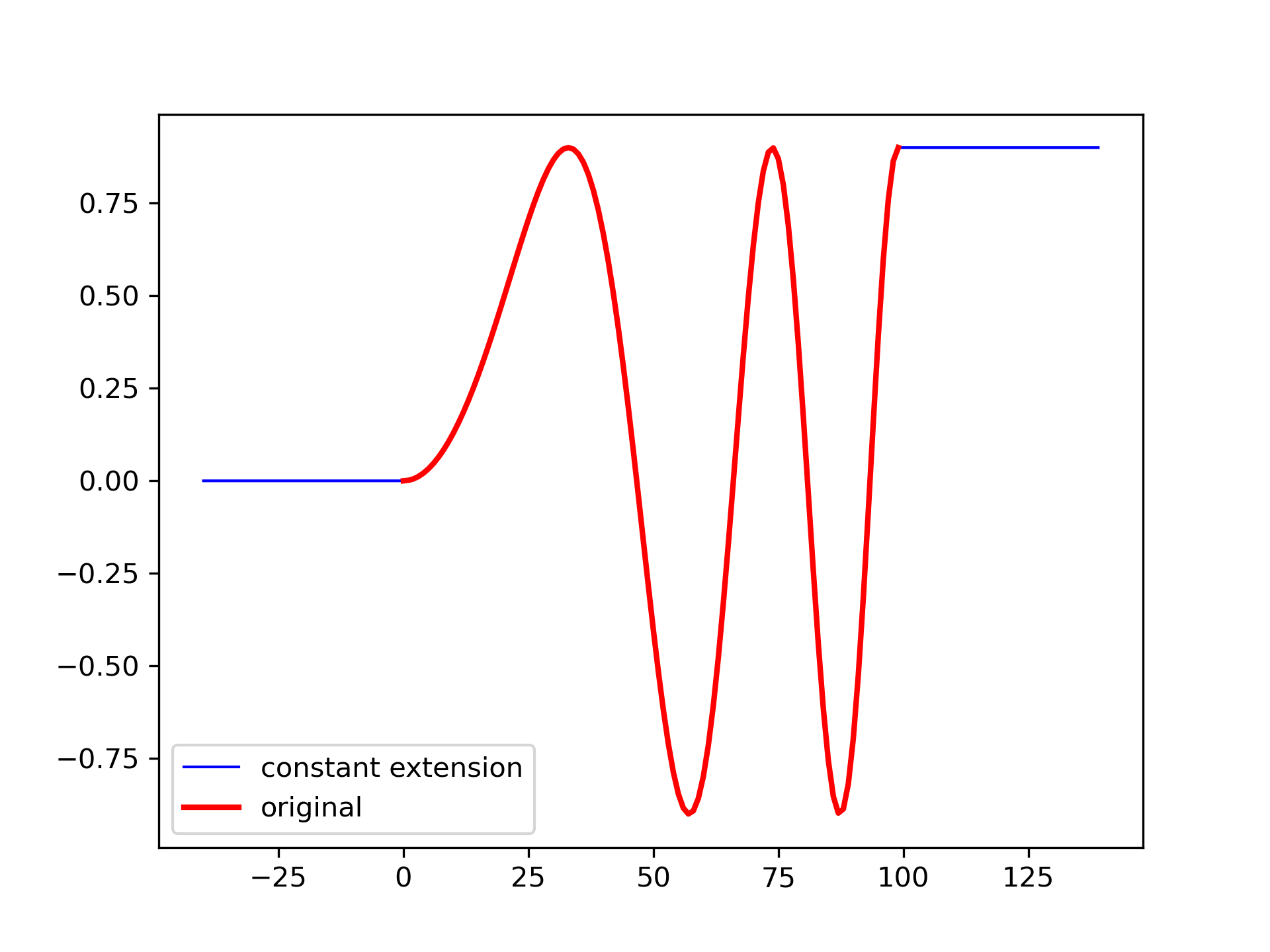const_ext(x, n, axis=-1)
Generate a new ndarray that is a constant extension of x along an axis.
The extension repeats the values at the first and last element of the axis.
The array to be extended.
The number of elements by which to extend x at each end of the axis.
The axis along which to extend x. Default is -1.
Constant extension at the boundaries of an array
>>> from scipy.signal._arraytools import const_ext
... a = np.array([[1, 2, 3, 4, 5], [0, 1, 4, 9, 16]])
... const_ext(a, 2) array([[ 1, 1, 1, 2, 3, 4, 5, 5, 5], [ 0, 0, 0, 1, 4, 9, 16, 16, 16]])
Constant extension continues with the same values as the endpoints of the array:
>>> t = np.linspace(0, 1.5, 100)
... a = 0.9 * np.sin(2 * np.pi * t**2)
... b = const_ext(a, 40)
... import matplotlib.pyplot as plt
... plt.plot(arange(-40, 140), b, 'b', lw=1, label='constant extension')
... plt.plot(arange(100), a, 'r', lw=2, label='original')
... plt.legend(loc='best')
... plt.show()

The following pages refer to to this document either explicitly or contain code examples using this.
scipy.signal._arraytools.const_ext
Hover to see nodes names; edges to Self not shown, Caped at 50 nodes.
Using a canvas is more power efficient and can get hundred of nodes ; but does not allow hyperlinks; , arrows or text (beyond on hover)
SVG is more flexible but power hungry; and does not scale well to 50 + nodes.
All aboves nodes referred to, (or are referred from) current nodes; Edges from Self to other have been omitted (or all nodes would be connected to the central node "self" which is not useful). Nodes are colored by the library they belong to, and scaled with the number of references pointing them